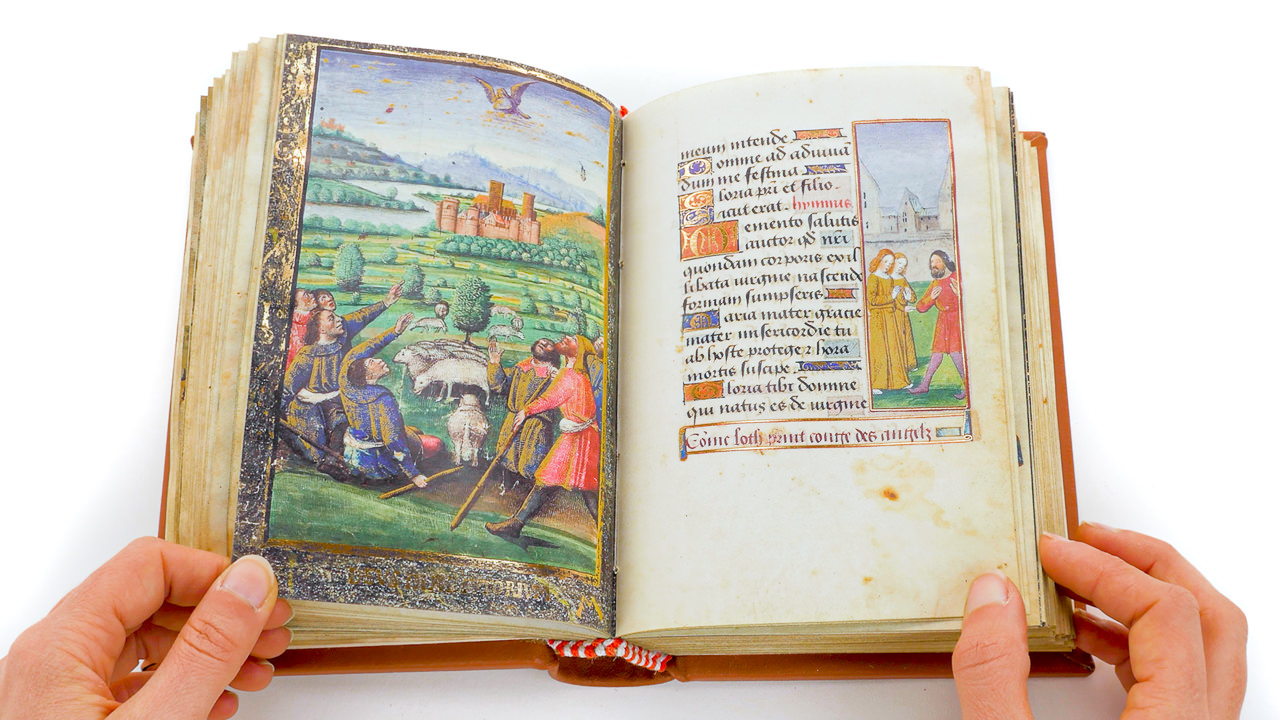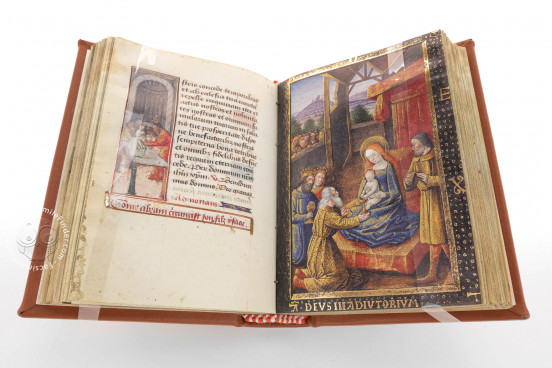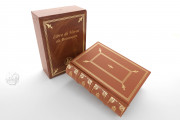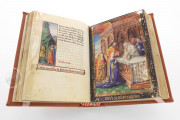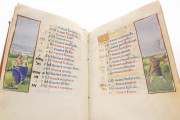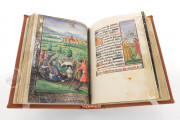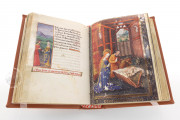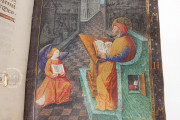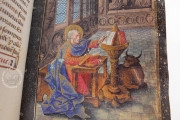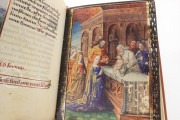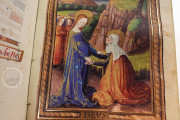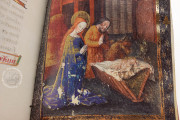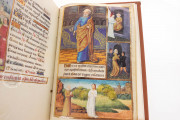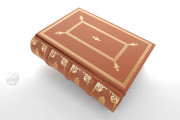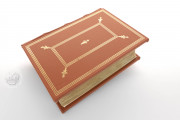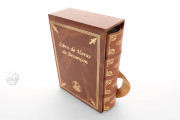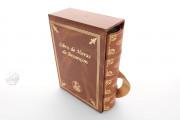The Book of Hours of Besançon is a magnum opus by Jean Colombe with a miniature gracing every single page. Created in Bourges and possibly Lyon around 1480-1485, it is a collection of Christian prayers, many arranged in a series of daily services, intended to direct the devotional activity of a lay person. Full-page miniatures announced the beginnings of new texts. They originally numbered eighteen, of which twelve survive. Boasting more than 300 miniatures painted in vivid colors and highlighted with gold, this codex was undoubtedly a prestige object conceived for a high-ranking patron.
The manuscript begins with a calendar featuring narrow images of the zodiac signs and labors of the month in the outer margin of each page. Each subsequent text page features a tall thin marginal image. The paintings trace stories, some obscure and rarely treated in art, from the Old Testament books of Genesis through Tobit with a brief interruption for a series of scenes from the Passion of Christ and the early ministries of the apostles. The final two images remain a puzzle.
The Master of Bourges
Jean Colombe is famous both for the idiosyncrasies of his painting and for the ambitiousness of his decorative programs. The Besançon manuscript, like the Book of Hours of Louis de Laval and the Hours of Guy Le Peley, has miniatures numbering in the hundreds and must have required the use of assistants. A remarkable feature of the surviving evangelist portraits in the Besançon book is the deep interior setting for each writer's activity featuring mural paintings depicting a scene or scenes from the life of Christ most associated with that particular author (fols. 14r, 16r, and 18r).
A Change in Personnel
While the illumination of most of the manuscript is the work of Colombe and his assistants, it appears that another artistic personality was responsible for the last few miniatures. They may be the work of a follower of Guillaume Lambert, who was active in Lyon.
Written in French Bâtarde
The French-language calendar, the Latin prayer texts, and the French texts in fictive scrolls explaining the subjects of the Old Testament miniatures are all written in an elegant French Bâtarde. The calendar entries alternate between red and blue ink, except for the most solemn feasts, which are named in gold. The explanatory picture captions are in red. The manuscript boasts hundreds of 1- and 2-line decorated initials and line fillers, all executed in gold on blue and red grounds.
A Sophisticated Book for an Unknown Patron
Nothing is known about the patronage and early ownership of the book. The decorative accent on Saint Peter (fol. 182r) among the few suffrages may provide a clue to the first owner. It is the first of the paintings thought not to be the work of Colombe and his workshop and may have been included in response to a specific request. The manuscript was in the library of the Benedictine priory of Saint-Désiré at Lons-le-Saunier in the seventeenth century. The manuscript's current binding of leather over pasteboard dates from the same century.
We have 1 facsimile edition of the manuscript "Book of Hours of Besançon": Libro de Horas de Besançon facsimile edition, published by Orbis Mediaevalis, 2020
Request Info / Price
